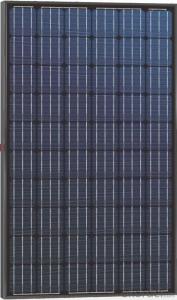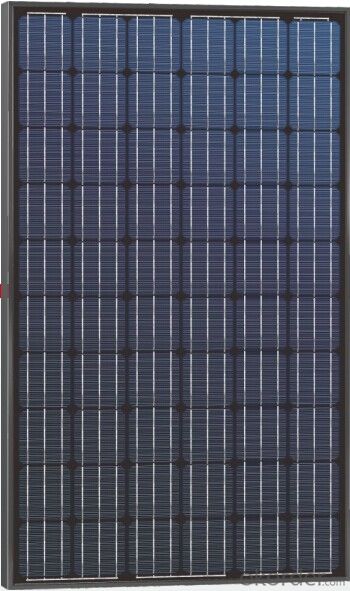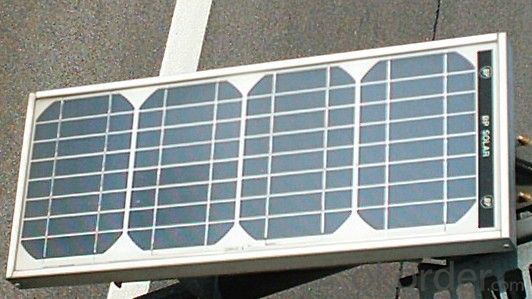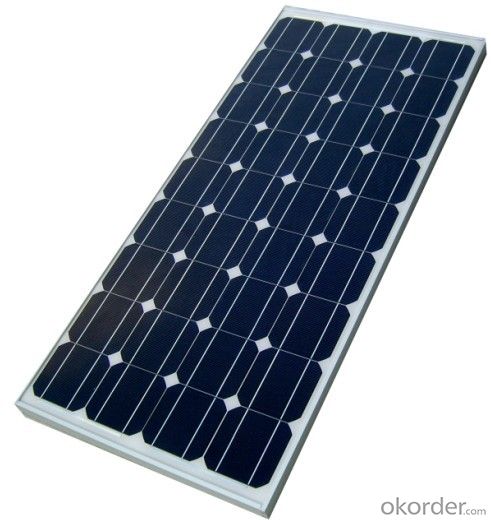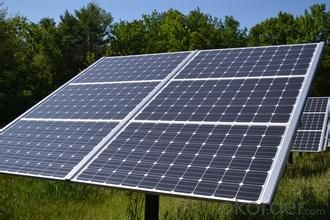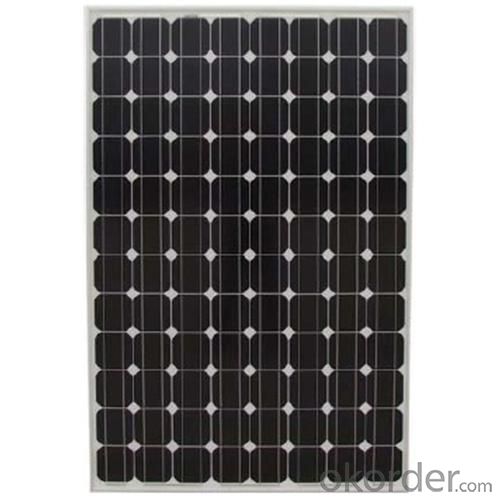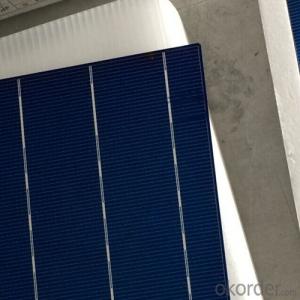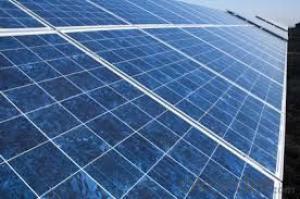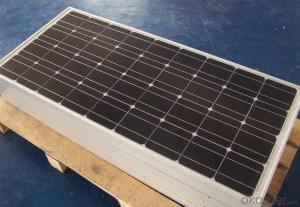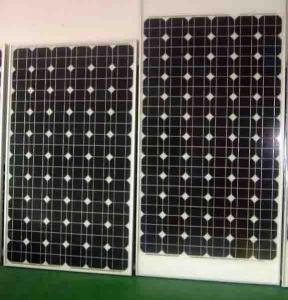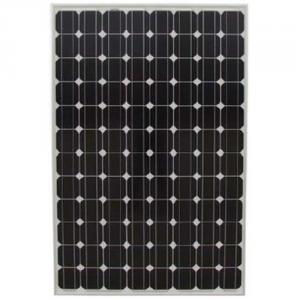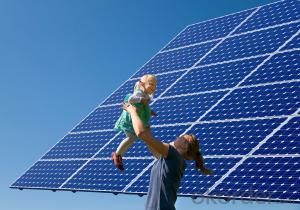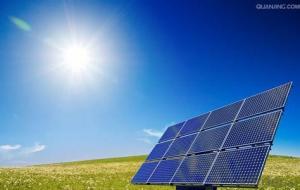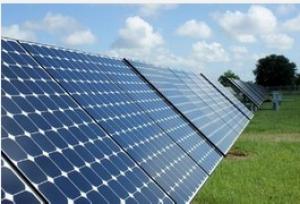Cubesat Solar Cells High Efficiency Monocrystalline PV Module Black Backboard 250W-260W
- Loading Port:
- China Main Port
- Payment Terms:
- TT or LC
- Min Order Qty:
- -
- Supply Capability:
- -
OKorder Service Pledge
OKorder Financial Service
You Might Also Like
Structure
Solar panel refers either to a photovoltaics (PV) module, a solar hot water panel, or to a set of solar photovoltaics modules electrically connected and mounted on a supporting structure. A PV module is a packaged, connected assembly of solar cells. Solar panels can be used as a component of a larger photovoltaic system to generate and supply electricity in commercial and residential applications.
Features
Nominal 20V DC for standard output.
Out standing low-light performance.
Heavy-duty anodized frames.
High transparent low-iron, tempered glass.
Rugged design to withstand high wind pressure, hail and snow load.
Aesthetic appearance.
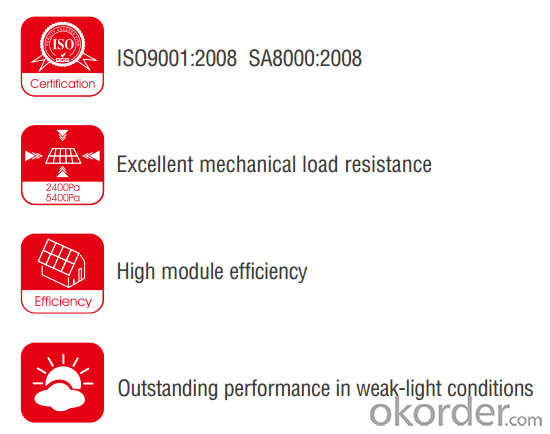
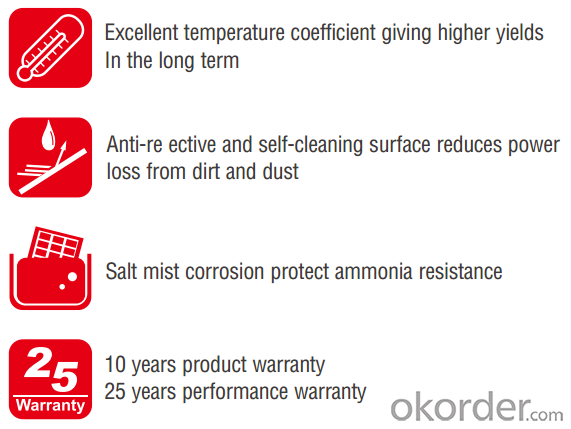

Images
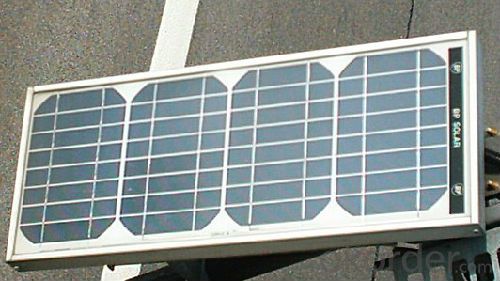
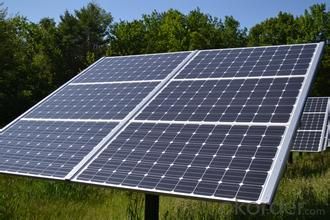
Specification
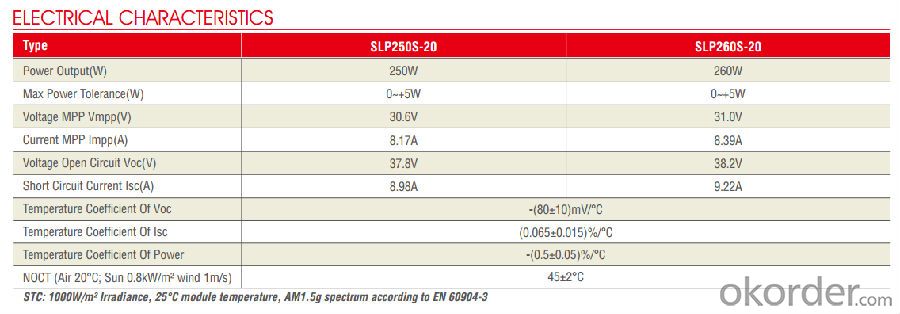

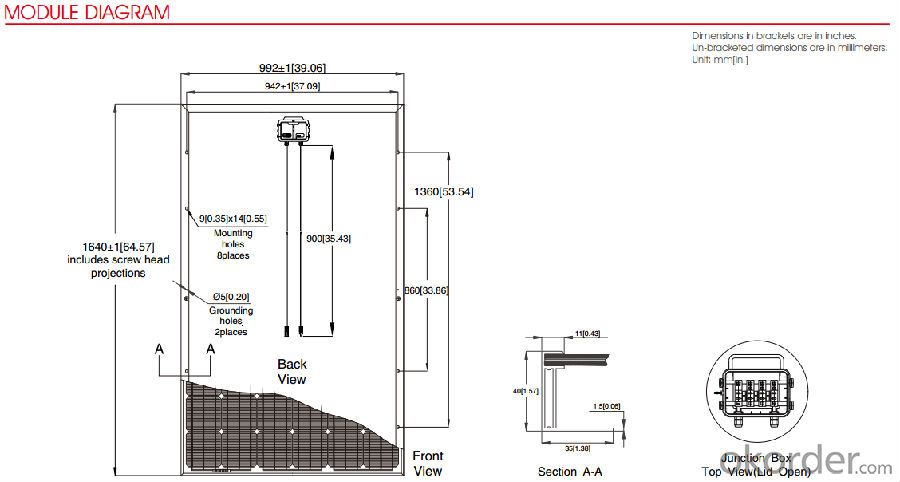
FAQ
Q:How to guarantee the quality of the products?
A:We have established the international advanced quality management system,every link from raw material to final product we have strict quality test;We resolutely put an end to unqualified products flowing into the market. At the same time, we will provide necessary follow-up service assurance.
Q:Can we visit your factory?
A:Sure,welcome at any time,seeing is believing.
Q:Which payment terms can you accept?
A:T/T,L/C,Moneygram,Paypal are available for us.
- Q: Can solar cells be used in space heating systems?
- Yes, solar cells can be used in space heating systems. Solar thermal systems can collect and convert sunlight into heat energy, which can then be used to heat spaces. Solar panels can also be used to generate electricity, which can power electric space heaters.
- Q: Can solar cells be used in commercial applications?
- Yes, solar cells can be used in commercial applications. They are widely used in various sectors such as energy production, agriculture, telecommunications, transportation, and construction. Solar panels are employed to generate electricity for commercial buildings, provide power to remote areas, run water pumps, charge electric vehicles, and more. The cost-effectiveness, sustainability, and growing efficiency of solar technology have made it a viable option for businesses to reduce their carbon footprint and save on energy costs.
- Q: Can solar cells be used in cloudy or rainy weather?
- Yes, solar cells can still be used in cloudy or rainy weather. While their efficiency may be reduced, they can still generate electricity from diffuse sunlight or indirect light. However, their performance will be optimal in direct sunlight.
- Q: What is the difference between a monocrystalline and polycrystalline solar cell?
- The main difference between a monocrystalline and polycrystalline solar cell lies in their composition and manufacturing process. Monocrystalline solar cells are made from a single, high-purity silicon crystal. This results in a uniform structure with a consistent and orderly arrangement of atoms. Monocrystalline cells are known for their high efficiency and sleek appearance, as they typically have a black or dark blue color. On the other hand, polycrystalline solar cells are made from multiple silicon crystals. These crystals are smaller and not as perfectly aligned, leading to a more random arrangement of atoms. Polycrystalline cells are usually recognizable by their bluish hue and a fragmented appearance. In terms of efficiency, monocrystalline solar cells tend to have a slightly higher efficiency rate compared to polycrystalline cells. However, recent advancements in technology have narrowed this efficiency gap, and polycrystalline cells are now approaching the efficiency levels of monocrystalline cells. Another difference is the cost. Monocrystalline solar panels are generally more expensive due to the higher purity of silicon required and the more complex manufacturing process. Polycrystalline panels, on the other hand, are more cost-effective and offer a lower price per watt. In summary, while monocrystalline solar cells have higher efficiency and a more uniform appearance, polycrystalline cells are more cost-effective and have made significant improvements in efficiency in recent years. The choice between the two ultimately depends on individual preferences, budget, and specific project requirements.
- Q: Many people said the usage of solar cell can reduce the cost overall, but does anyone agree with me that it actually cost a lot to operate a solar cell system?
- Disagree, because you should see it in a different way.
- Q: Can solar cells be used in sports stadiums or arenas?
- Yes, solar cells can be used in sports stadiums or arenas. They can be installed on the roofs or other suitable areas to generate renewable energy that can be used to power various systems within the facility, such as lighting, scoreboards, or even charging stations for electric vehicles. Additionally, solar cells can help reduce the environmental impact of these large venues by decreasing their reliance on non-renewable energy sources.
- Q: Can solar cells be used for refrigeration?
- Yes, solar cells can be used for refrigeration. Solar-powered refrigeration systems utilize solar cells to convert sunlight into electricity, which is then used to power the refrigeration process. This technology is particularly useful in off-grid or remote areas where access to electricity is limited. It allows for sustainable and environmentally-friendly refrigeration solutions.
- Q: Can solar cells be used for powering wildlife tracking devices?
- Yes, solar cells can be used for powering wildlife tracking devices. Solar cells convert sunlight into electrical energy, which can be stored in batteries and used to power various devices, including wildlife tracking devices. This allows for continuous and sustainable power supply, eliminating the need for frequent battery replacements or recharging.
- Q: Can solar cells be used in electric fence systems?
- Yes, solar cells can be used in electric fence systems. Solar cells can generate electricity from sunlight and convert it into usable energy, which can power an electric fence system. This eliminates the need for traditional grid power or batteries, making it a cost-effective and environmentally friendly option.
- Q: Can solar cells be used in electric grid stabilization?
- Yes, solar cells can be used in electric grid stabilization. Solar power can contribute to stabilizing the electric grid by providing a consistent and reliable source of renewable energy. The excess energy generated during peak sunlight hours can be stored in batteries or fed back into the grid, helping to balance the supply and demand. Additionally, solar power can reduce the reliance on traditional power plants, thereby reducing the risk of grid instability caused by disruptions in fossil fuel supply or sudden variations in demand.
Send your message to us
Cubesat Solar Cells High Efficiency Monocrystalline PV Module Black Backboard 250W-260W
- Loading Port:
- China Main Port
- Payment Terms:
- TT or LC
- Min Order Qty:
- -
- Supply Capability:
- -
OKorder Service Pledge
OKorder Financial Service
Similar products
Hot products
Hot Searches
Related keywords
